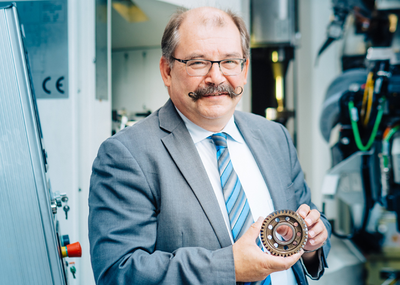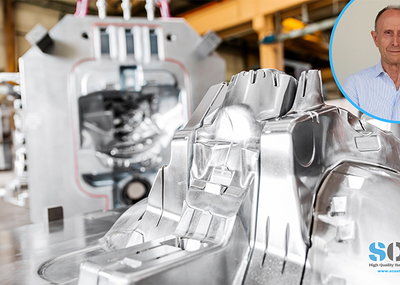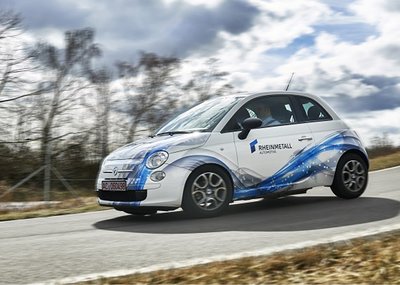As early as November 2022, the EU Commission put an important topic on the agenda, the effects of which are relevant for everyone - the Euro 7 standard. The aim of this new standard is to minimize the environmental impact of particulate matter and thus do something good for both the environment and the health of citizens. The new standard is scheduled to come into force in July 2025. What sounds easy to implement in theory is now presenting the automotive industry with major challenges.
The new standard is intended to ensure stricter control and compliance with particulate matter emissions. This is because, in addition to exhaust gases, other emission sources are to be brought under control in the future, as microplastics and particulate matter are released into the environment through the tires and brakes of vehicles. This is a relevant problem for residents in cities and for the environment.
The reason: While the impact of CO2 pollution is global, particulate matter pollution affects people living in the immediate vicinity of the emission source. Places with high particulate matter pollution are, for example, intersections, busy roads and subway stations. The reason for this is the increased volume of braking traffic. Braking causes abrasion of the brake disc and brake pad, which leads to particulate pollution in the immediate vicinity. This problem now needs to be addressed due to the new emission standard 7. In particular, the manufacturers and suppliers of brake discs are now faced with the challenge of rethinking both the brake systems and the tires. This innovation is happening beyond internal combustion engines and is thus luring car manufacturers out of their comfort zone. Pressure from the government is forcing vehicle manufacturers to pay closer attention to the levels of particulate matter produced by the abrasion of brake discs. Currently, a vehicle emits between 5 and 40 milligrams of particulate matter per kilometer. These values are obtained by measuring particulate matter smaller than 10 micrometers (PM10) within a driving cycle.
In the new Euro 7 standard, the limit will be reduced to just 7 milligrams of PM10 per kilometer and vehicle. And this is completely independent of the size of the vehicle or the type of drive. (Source: HPL Technologies GmbH)
How can this problem be brought under control? The solution would be brake discs with low-wear hard coatings. The result is less wear and consequently less particulate matter emitted into the environment.
This contrasts with the alternative idea of a brake dust filter and an extraction mechanism in the vehicles. However, this is problematic because the brake dust filters and extraction mechanisms mean that compliance with the fine dust limits cannot be achieved across the board. The vehicle manufacturers do not benefit from this either, as additional costs are incurred due to the installation and maintenance of these filters and extraction mechanisms. Such devices are also usually associated with regular maintenance. Thus, the brake disc coated with hard material turns out to be the most effective and efficient solution. Conventional cast iron brake discs are coated with tungsten, titanium or niobium carbide, thus enabling a reduction in brake-related particulate emissions. The hard-coated brake discs are additionally refined with corrosion and wear protection. This is achieved by coating with stainless steel or hard material. However, this is associated with high manufacturing costs, and consequently the price of the brake discs is driven up. For this reason, they have so far been offered mainly for premium vehicles.
Der weltweite jährliche Bedarf an Bremsscheiben liegt, nach Angaben von Der Pressedienst bei rund 450 Millionen Stück.
Auf den Straßen sind mehr und mehr Elektrofahrzeuge unterwegs. Das Problem hierbei ist, dass diese Fahrzeuge seltener die Bremsen nutzen, da während der Rekuperation des Motors genügend Bremswirkung besteht und somit die Nutzung der Bremsen minimiert wird. Klingt im ersten Moment nach DER Lösung, allerdings kann die mangelnde Nutzung der Bremsen zu Rost führen. Daher ist für die Automobilhersteller aus dem Bereich der Elektroautos die beschichtete Bremsscheibe ebenfalls eine attraktive Alternative, da so die Bremsscheiben verschleißarm und korrosionsfrei sind. Dies hat zur Folge, dass die Nutzungsdauer der Bremsscheiben aufgrund des geringeren Verschleißes gesteigert werden.
The aim of the new standard is to reduce air pollutant emissions in road traffic while ensuring a high level of environmental and health protection. This by no means means banning internal combustion engines altogether, but rather making them as clean as possible in a cost-effective way. The coated brake discs help to achieve the prescribed targets.
The EU Commission has imposed this requirement on the automotive industry and it must now respond - and do so immediately. The adjustments must be made quickly, as otherwise there may be problems with registration if the requirements are not met by the deadline. Vehicle manufacturers are thus faced with several problems at the same time. On the one hand, the coated brake discs and brake pads have to be matched and tested as a tribological system in relation to the vehicle. On the other hand, the procurement and start-up times for series production and the production technology have to be planned and set up.
However, the hard-coated brake disc is created by a coating technology. This coating technology is a primary forming, additive process. Inaccurate planning or lack of knowledge during production can lead to unplanned failures of the brake discs. This should be prevented at all costs, which is why series production of the hard-coated brake discs has been lacking to date.
Before series production can start, automotive manufacturers must first master the processing of the coated brake discs for the vehicles. This presents a special challenge for the production of the components. The manufacturers of these brake discs are faced with a new manufacturing challenge that must be overcome, and promptly. The friction surface of each brake disc must be ground on both sides after coating to ensure reliable operation. For this reason, double surface grinding is particularly well suited as a manufacturing process. Through double surface grinding, a flat and plane-parallel, as well as high surface quality can be achieved. The basic prerequisite for functional brake discs is not only a high surface quality but also flatness and plane parallelism in the grinding process.
Therefore, it is necessary to perform this grinding process with processing machines and tools characterized by high precision. The focus of the production of these brake discs is primarily to maximize the performance and durability of the brake discs, but also a cost-effective production. This focus can only be maintained if the manufacturing process runs smoothly. The production of hard-coated brake discs is an extremely difficult process, as the grinding tool is subjected to enormous wear. The wear of the grinding tool is increased by the hard material. In addition, there is a large contact length and little space. Therefore, a targeted supply of cooling lubricant is essential to ensure sufficient cooling and lubrication in the grinding process.
Source: www.pressebox.de








